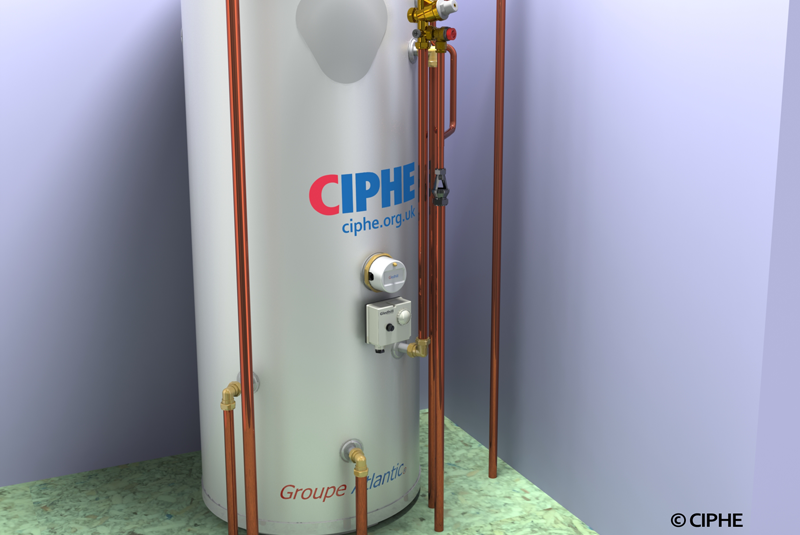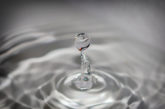
Following the British Plastic Federation (BPF) Pipes Group’s recent report on unvented hot water discharge pipe termination, Paul Harmer, Technical Director of the Chartered Institute of Plumbing and Heating Engineering (CIPHE), shares best practice tips when it comes to compliant installations.
Plumbing and heating professionals are regularly faced with the temptation of easing the installation process by terminating the unvented hot water safety discharge pipe into a plastic soil stack. Recent tests conducted on behalf of the BPF Pipes Group indicate that only D2 discharge pipes are installed – using a plastic pipe material compliant with the BS EN 1451-1:2000 standard.
Although this may be doable in a new build property, whereby the correct soil stack or waste pipework material is certified from the start, it could be considered a risk in retrofit applications due to the lack of knowledge surrounding existing plastic pipe material. This is why the CIPHE aims to raise awareness of how to be compliant and what this means in practice for installers of unvented hot water storage and heating systems.
Meeting regulations
To comply with the Building Regulations, which incorporate England and Wales, the water Supply (Water Fittings) Regulations and the Scottish Water Bylaws, a hot water system with a storage vessel must be fitted to prevent the stored water exceeding 100OC. This is in addition to ensuring that any discharge from a safety device is diverted safely away too.
To achieve this level of temperature control, usually a temperature relief valve or a combined temperature and pressure relief valve (T&P) will be installed. This satisfies the requirements set out by BS EN 1490: 2000 to stop water overheating and will also discharge in the event the water does become too hot.
Under these controlled conditions, safety relief discharge pipework from unvented hot water storage systems with a capacity up to 410 litres (500 litres nominal) can be drained to plastic sanitary pipework.
It must be noted that uncontrolled temperature discharge, such as that from pressure relief valves (PRVs), should not be drained through sanitary pipework as temperatures could reach in excess of 100°C – but in any case is not permitted under G3.
In practice
When it is deemed impractical to route the discharge pipework directly to an external point in a visible location, it is recommended that approved self-sealing waterless valves are used for connecting. These type of valves should be used as they prevent foul sewer gases from entering the building, whereas water traps are not suitable in this situation as they can dry out.
A tundish adaptor will also ensure that the minimum 300mm below the tundish (before any elbows or bends in the pipework) can be achieved, as per Approved Document G of the Building Regulations. The waterless valve needs to be installed vertically, adjacent the storage cylinder, whilst being visible and accessible.
A suitable plastic pipe (such as polypropylene complying with BS EN 1451-1:2000) – supported at maximum 300mm intervals – may be used for downstream pipe D2. The BPF Pipes Group and its members strongly advise that pipes manufactured to BS 7291: 2006 (Parts 1 to 3) are not used for the downstream pipe D2.
Additional installation considerations
Given the high temperatures reached during valve operation, it is also recommended that the connection of pipework to the soil stack is achieved using an appropriately sized boss pipe fitting, fixed in place with a bracket. This arrangement is preferable to strap, clip or patch bosses, which are typically used in the retrofit of standard appliances. An acceptable alternative would be to connect to a soil pipe manifold.
Where a waterless valve and plastic pipework (pipe D2) are used, the connecting pipework should not be connected to a stack unless it can be demonstrated that the stack is capable of withstanding temperatures of the water discharged.
The soil stack should be vented to the atmosphere and constructed from a suitable plastic pipe – such as PVC-U to BS EN 1329-1 or PE to BS EN 1519-1. In addition, PVC-U pipes to BS EN 1453-1 manufactured by BPF Pipes Group members may be used for this application.
Maintenance
As long as good plumbing practice and design are adhered to at all times and the products used are verified as being suitable by a third party accreditation scheme, such as the BSI Kitemark, installers can be safe in the knowledge that a system should work correctly and last. However, it is critical that safety devices on the unvented hot water storage system are checked annually to prevent any risk of failure and potential property damage.
For more information about the CIPHE, visit www.ciphe.org.uk. To get in touch, email [email protected] or call 01708 472791











